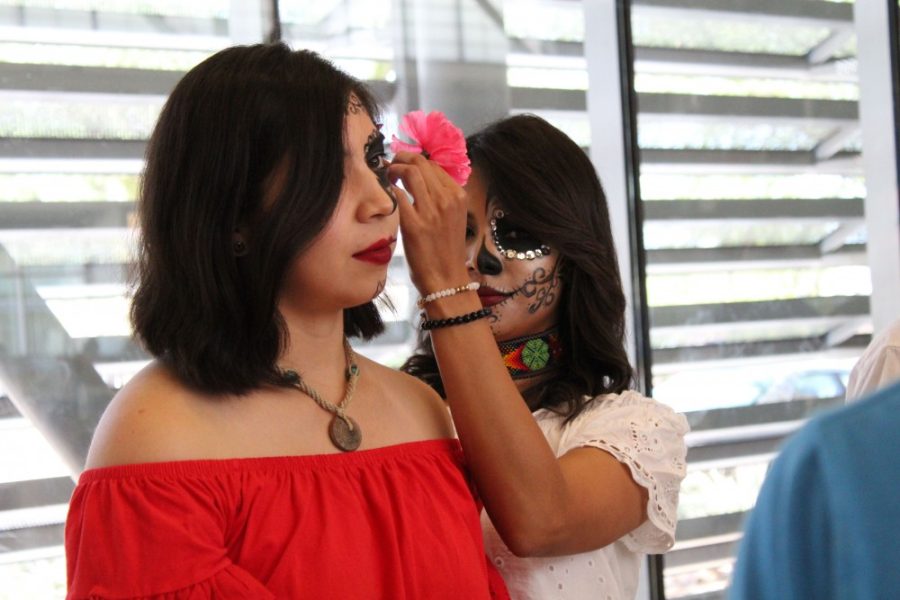UA Global’s international programs bring together students from all parts of the world, each with their own goals to attain and stories to tell. During the summer, Study Arizona: Short-Term Programs hosts international students in STEM fields and social sciences.
Students get to live on the UA campus, participate in faculty-mentored research projects and immerse themselves in a number of different cultures. This year, students worked to find a relationship between a foreign country and their own.
“We host students from different parts of the world and the faculty and staff here [at UA Global] thought it would be a good idea for international students to interact with other students participating in this program,” said Nadia Alvarez, director of Study Arizona: Short-Term Programs.
On one table, students from Saudi Arabia and Mexico showcased the relationship of their two cultures through the power of food.
“We have a flour tortilla from the northern part of Mexico and here we have khubz bread from Saudi Arabia. Aside from a difference in taste, they’re pretty much used the same way,” said Ana Paul Peñuñuri, a senior from the University of Sonora, Mexico.
Peñuñuri is under mentorship in a ten-week program offered by UA and hopes to gain her master’s degree in biology at UA.
“Although I used to come to Tucson for shopping or visiting family in the past, coming to UA is a far better experience for me, studying biology in a very welcoming lab,” Peñuñuri said.
The program also welcomes graduate students who are pursuing careers in research. Students receive one-on-one mentorship in their own research, preparing them to join some of their mentors’ research at UA.
“I love the experience. I’ve been here for a year studying chemistry,” said Anupama Peiris, a graduate student from Panadura, Sri Lanka. “Some of the places I find similar to some of Sri Lanka’s culture [are] some Indian and Mexican restaurants, for some of the spicy food.”
RELATED: Global Festival puts prospective students’ cultures on display
Peiris, along with her peers, helped set up a colorful table with displays of pictures of the diverse landscape of Sri Lanka, from arid desert plains to sunsets on tropical beaches.
On one side of the table were students educating attendees on the Sinhalese and Tamil languages, two of the main languages spoken in the island nation located to the south of India in the Indian Ocean. People in attendance stood listening to the international students and went away with their name written in the Sinhalese alphabet.
Also on the display were wooden cooking utensils, a traditional red osariya dress, and a small tapestry with art reflecting the population of elephants in Sri Lanka. Sri Lanka’s flag was on display with a golden frame, representing the unity in diversity. Inside the border-like canvas were two panels with three more colors: green, orange and maroon.
RELATED: UA Global looks to redefine education
Two equal vertical bands of green and orange stood on the left and, according to Peiris, the green represents the Moors and the Islamic faith. The orange stands for the Tamils and the Hindu faith.
“The other color in the Sri Lankan flag is maroon, representing the Sinhalese people in the Buddhist religion,” Peiris said.
According to Alvarez, the event allows students to find a relationship not only in their field of study but among their diverse cultures. “There is a different dynamic when the students can identify and create an activity that maybe has an intersection between different cultures,” Alvarez said.









